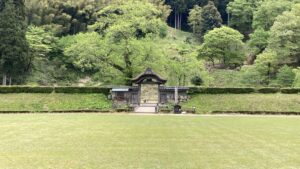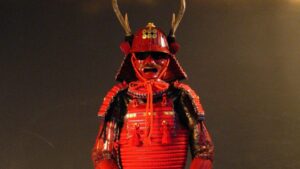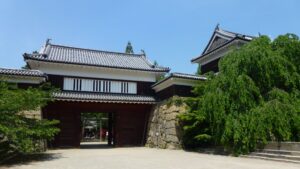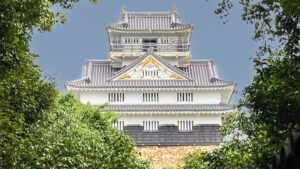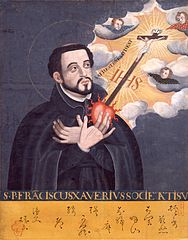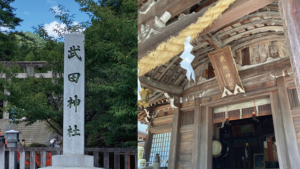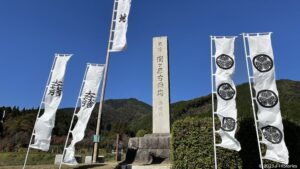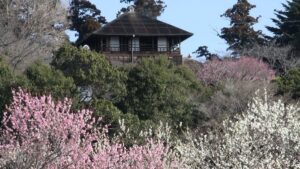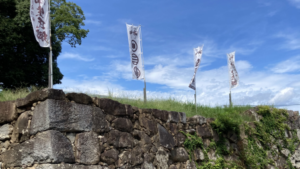Ichijo-dani Asakura Clan Ruins
Nestled in the quiet mountains of eastern Fukui Prefecture lies Ichijo-dani. This castle town served as the political and cultural center of the Asakura clan, who ruled the Echizen Province (present-day Fukui Prefecture) for five generations over a span of 103 years during the Warring States period. Asakura Sōteki (1477–1555, 朝倉宗滴), a wise and strategic […]
Sanada Maru: Nobushige's Final Battle Against Tokugawa Ieyasu
The Sanada Red Armor represents the elite corps led by Sanada Nobushige, better known as Sanada Yukimura. Their armor, banners, and weapons were uniformly dyed in vivid shades of red or vermilion, symbolizing bold warriors. During the Siege of Osaka (1614-1615), Nobushige's forces repeatedly outmaneuvered the Tokugawa army, culminating in a daring charge into Ieyasu's […]
Ueda Castle: The Fortress That Repelled the Tokugawa Army Twice
In the turbulent age of the Warring States period, when warlords vied for supremacy, a genius strategist, Sanada Masayuki, who rose from the rank of an ashigaru commander to warlord, built the formidable Ueda Castle, renowned for repelling the overwhelming armies of Tokugawa not once, but twice. Masayuki was described by the unifier of the […]
Oda Nobunaga's Gifu Castle: After Countless Battles, the Dawn of Tenka Fubu
Oda Nobunaga's Gifu Castle: After Countless Battles, the Dawn of Tenka Fubu
Nagasaki Port, the Blooming Nanban Trade and Christianity
The Namban Screen, created by Kano Naizen, a renowned painter of the Kano School, is regarded as one of the most exceptional screen paintings on gold foil paper. This masterpiece has an impressive width of approximately 3.5 meters and comprises a pair of six-panel folding screens. The term Nanban refers specifically to the southern regions […]
Takeda Shrine: Takeda Singen's Life & Battles
Dedicated to the strongest warlord, Shingen A 10-minute walk from Kofu Station in Yamanashi prefecture, Takeda Shrine stands at the foot of Yogai Mountain. Established in 1919 to enshrine Takeda Shingen (1521-1573, 武田信玄), the shrine is located on the site of the former Tsutsujigasaki-yakata, the residence of the Takeda clan. During the Warring States period […]
The Battle of Sekigahara
On 21 October 1600 (15 September 1600 in the Keicho era), the Battle of Sekigahara, the largest battle in Japanese history, was fought mainly in the Sekigahara area. The Eastern Army, led by Tokugawa Ieyasu (1543-1616, 徳川家康), about 70,000 to 80,000 soldiers, some of whom were loyal to Toyotomi Hideyoshi (1537-1598, 豊臣秀吉), clashed with the […]
Kairakuen Garden, Three Thousand Plum Trees is Breathtaking
Kairakuen Garden Park is located in Mito city in Ibaraki Prefecture about one hour train journey from Tokyo to the east. It is one of the finest three parks in Japan, following Kenrokuen in Kanazawa and Korakuen in Okayama. In early spring, the light pink, red, and white colors of over one hundred different plum […]
Matsusaka Castle: The Legacy of Martial, Scholarly, and Economic Talent of Gamo Ujisato
Gamo Ujisato (1556-1595, 蒲生氏郷) was a military commander of remarkable skill, both in martial arts and scholarship, who won the admiration of Oda Nobunaga (1534-1582, 織田信長) and Toyotomi Hideyoshi (1537–1598, 豊臣秀吉), during the Warring States period (1467-1573). Known not only for his military expertise, Ujisato also excelled in economic policy and was celebrated as a […]
Komaki and Nagakute Battlefield, Ieyasu's Strategy Toward Victory
Tokugawa Ieyasu (1543-16161, 徳川家康) laid the foundation for the 260-year Edo period (1603-1868) after a lifetime of numerous battles. His victory at the Battle of Komaki and Nagakute was later celebrated in the words of historian Rai Sanyo: "Ieyasu's power as a ruler of Japan was not the victory of the Siege of Osaka or […]

